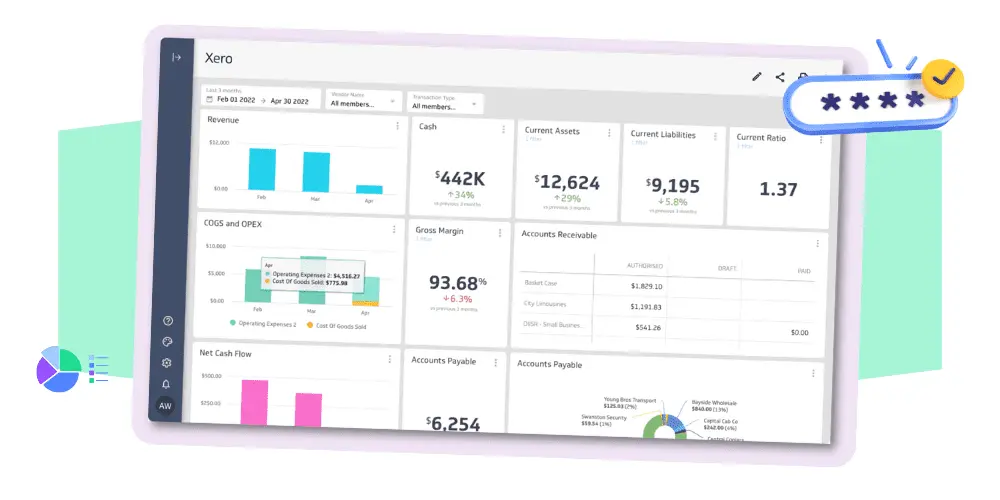There are different classes of ordinary shares that a company can issue, and each class confers different rights and privileges to the shareholders. Our experts have curated this guide to explain their impact on how limited company ownership works.
If you want to start a business, there’s no better time than now. If this is your first experience with it, you’ll be ready to go. Whether you’ve formed a company previously or not, you’ll still be eager to go if this is your first time doing so.
That’s because the sorts and class of shares you may offer have long-term ramifications. If you expect a need for equity financing through investors or fundraising rounds in the future, it will be worth your while to learn about share issuance options and what they imply for shareholder rights, conditions, and benefits.
These selections can have a significant influence on your company’s operations and decision-making. They may also be time-consuming and costly to change at a later date. Continue reading to learn more.
From starting a business and understanding share classes to mastering fundraising terms and exploring funding options, learn everything you need to build a solid foundation and navigate equity financing with confidence.
Different Classes of Shares in a Limited Company?
Different types of shares may be offered to investors in a company that has more than one owner with various amounts of money invested. These are the different sorts:
- Ordinary shares
- Non-voting shares
- Preference shares
- Redeemable shares
- Management Shares
Classes of Ordinary Shares in a Limited Company
A company may issue many different classes of ordinary shares, subject to shareholder approval. The term “alphabet shares” refers to ordinary shares that have the same letter designation and price but differ in terms of their rights. (A, B, C, etc.) This affects shareholders in the following ways:
- Entitlement to dividends
- entitled to vote.
- The right to the assets on winding up and disposal
Entitlement to Dividends
Dividends paid by a corporation to its investors are known as share dividends, and they come in many forms. Stock dividends can be regular (or constant) or special (paid before other classes of stock). A dividend may be set aside for specific events, such as an acquisition.
The distribution amount is sometimes determined by the size of profits made during the year just ended rather than on current profit levels. Dividends can also take numerous other forms, including some that are nontransferable and others that are not considered income but merely perks available only to shareholders. Under certain circumstances, a company may choose to pay no dividend instead of distributing one proportionate share among all outstanding shares.
Learn about Types of Shareholders, Definitions, and Roles in a Business to understand how dividend entitlements vary and explore The Workings of Dividend Tax in the UK to manage your tax obligations effectively.
Entitlement to Vote
This can be as simple as having voting rights or not, but weighted or tiered votes are sometimes an option in certain cases.
The Right to the Assets on Winding up and Disposal
Any assets left after all liabilities have been satisfied can be distributed to shareholders if the company is shut down. Capital distribution rights differ depending on the class of share.
The Need for Classes of Shares?
In some cases, a firm’s early years might include more than one investor, and various share kinds may be created depending on the circumstances and goals of the founder and company.
It’s feasible in a limited company to value shares in terms of what they can do for the owner based on different types and classifications. For example, in some situations, to receive the most tax-advantageous compensation while maintaining voting rights with the directors.
There is no specific form of share that has to be utilized when starting a firm. Small businesses frequently offer ‘ordinary shares,’ which give full rights to dividends, voting at meetings, and the right to asset distribution in the event of bankruptcy or sale.
If a firm has only one owner, the simplest thing to do is give out a single £1 share. However, if there are several shareholders with various levels of share capital, you might need to consider different options.
How are Other Classes of Shares Different from Ordinary Shares?
The most recurrent class of shares is ordinary shares. They have one vote per share and allow the owner to participate equally in dividends. If the company shuts down, the money is distributed evenly again. Ordinary shares can vote but are ranked below preference shares with respect to capital rights in the case of business liquidation. These securities may be divided into multiple classes as mentioned above.
Non-Voting Shares
A company’s non-voting ordinary shares usually have no voting rights and no right to attend general meetings. These shares are generally given to staff so that remuneration may be paid as dividends for tax purposes, allowing both partners to benefit.
Preference Shares
A preference dividend is one in which a fixed amount of money is paid out each year to the owner. Individuals who hold ordinary shares receive it before those who own preference shares. It’s usually a proportion of the real value (the original price at issuance).
Redeemable Shares
What are redeemable shares? They’re a type of stock that has an expiration date and may be redeemed by the company at a future time. This is fixed or left to the director’s discretion, which is typical for this sort of security. It’s frequently accomplished with non-voting shares given to staff so that if they leave, the assets can be returned at their original price.
Management Shares
A class of shares with greater voting rights in order to keep control of the firm in particular hands. This might be accomplished by giving each share ten votes (for example) or by having a smaller nominal value for such shares so that there are more shares (and thus more votes) per £1 invested. After additional shares have been generated for outside investors, these sorts of shares are frequently utilized to maintain ownership in a firm after it has been sold.
Important Paperwork That You May Need if You are Just Starting up
- Company name
- An address
- At least one director
- At least one shareholder
- A ‘memorandum of association’ is a legal document that establishes the company and states the intentions of all initial shareholders (subscribers) to establish it.
- A statement of capital is a document that contains details of the company’s shares and the rights attached to them, often known as a “capital statement.”
- Articles of association, known as “doctrine,” are a set of rules that define how the firm is run.
While all paperwork is required for incorporation, the memorandum of association verifies that the shareholders want to establish a firm under the Companies Act 2006 and consent to become shareholders. If the firm is limited by shares, the memorandum of association stipulates that shareholders must hold at least one share each. This is frequently set at £1 per share.
While this implies that all shareholders must own at least one share, it does not rule out the possibility that the ideal share structure would be for all investors to have one share each.
Changing Class Rights
The rights in a class of stockholders’ shares are protected by some legislation. The rights on the majority’s shares would otherwise be susceptible to modification (e.g., by special resolution) if there was a minority class of shares or a class of non-voting shares. A variant of class rights is referred to as this. This topic is beyond the scope of this database, however, the following is a summary of some key statutory provisions:
Under section 630 of the CA 2006, classes may only be varied in accordance with the articles or if either:
(a) the holders of three-quarters in nominal value of the issued shares of that class consent in writing to the variation; or
(b)a special resolution (75% majority) is passed at a separate general meeting of the holders of that class to sanction the variation.
Sec. 633 of the Act states that following a proposed variation: The holders of not less than 15% of the outstanding shares (being persons who did not consent to or vote in favour of the resolution for the variation) have a legal right to appeal against the modification before it is completed.
Conclusion
To sum it all up, there are two types of shares: voting and non-voting. Each type has its own set of benefits and drawbacks. Voting shares give the shareholder a say in how the company is run, while non-voting shares do not. It is important to remember that all shareholders are equal when it comes to dividends and ownership rights.
Additional Resources









































































